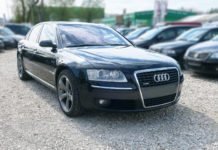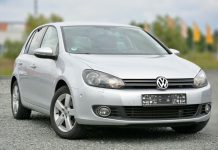The Range Rover Sport definitely has it’s own character, a character of a car which belongs to a football player or a drug dealer, or a wanna be gangster maybe? The possibilites are technically limitless, but lets forget all these stereotypes for a moment, because the specific design of this car aged very well and it really does look much more interesting and of course better than a usual BMW X5, VW Touareg, or Mercedes M class which you can see day after day, every day, every work day, every grey day… Green day!
But aaanyway, lets not mix apples with potatoes, and lets go back to this 4WD vehicle.
It is that kind of a car in which you can travel long distances comfortably and in style. On the other side it’s not only a tarmac oriented comfortable and stylish uneconomical boxy box. Thanks to the 4WD, a height adjustable air suspension, a low range gearbox and the Integrated Body frame it’s also a very capable off road-ish vehicle. So taking it off road is not a problem since it shares a lot of the components (and more or less the reliability as well) with the Land Rover Discovery 3/4 including the Integrated Body Frame.
The Integrated Body Frame means that this smaller Range Rover has a separate frame, so it does have overall a stronger body and better off road capability than for example the BMW X5, or the Mercedes M-class from that time. On the other side because of this separate frame solution it’s also heavier than these cars, and at the end of the day, most of the owners will never take it off-road anyway.
But there is a price you have to pay to have all these features. So keeping a used Range Rover alive and in a good condition will most probably cost you a little bit more than you expected, and in some cases a lot more then you expected. For example, because of the integrated body frame the whole chassis can be separated from the body, and it has to be, since if you need to change some specific parts – like for example the turbocharger, then this is the only way to do it. (although a skilled mechanic should be able to change the turbocharger even without removing the body at least on cars equipped with the V6 engines)
On the other side this way you get at least a great access to all the suspension components, brake pipes and to the engine itself, so you can check everything properly. And lets be honest, it is a used Range Rover which means that you most probably need to check and fix some of these things anyway.
“Removing the body takes approximately 8 hours, but some say that a very skilled mechanic can do it in less than 2 hours.”
Interior

Because of the big side windows and a higher seat position you have a very good visibility from the interior and most of these cars are well equipped with various electronic features. However the before facelift models made before 2010 do have a more outdated looking center console and some issues with the build quality. I mean the materials in the interior are mostly durable, but cars which are used in hot climate areas can have often issues with the cracked plastic dashboard which starts to crack mainly around the passenger airbag + you can easily find cars with sagging headliner or sagging A-pillar fabric. You can of course fix the sagging A-pillar fabric or the headliner easily without bigger problems, but replacing the dashboard with a brand new part is obviously much more expensive and complicated.

On the other side, they completely updated the dashboard and improved the build quality in the facelifted models (on the upper picture). Of course they updated the electronics and the multimedia system too, so you got a nicer and faster navigation system for example. Although the center multimedia system touchscreen display response is still pretty slow and the central display graphics-in the instrument cluster, looks like it was made in the 1980s, just look at it ↓↓ ↓↓

Body, paintjob, rust protection
There should be no rust on the body panels, although cars used on winter salty roads will have most probably some rust on the undercarriage. This rust on the frame is not the end of the world, but of course you can remove it, and there are many different ways how to protect the frame – here you can find some additional info about the underside rust proofing.
And it’s definitely worth checking the brake pipes which can be already rusty mainly in the before facelift cars.

Possible problems
As usual it’s important to check all the electronics and pay bigger attention to the following features:
-So check the power folding mirrors, the parking sensors, the door locks can fail, issues with battery draining can occur and the alternator failures are common
-If you can’t open the tailgate, then most probably the tailgate switch is faulty and sometimes the wiring which goes from the switch is faulty
-Problems with the incorrect reading of the fuel gauge can occur which is most of the time caused by the faulty sender unit connectors. In this case you have to remove the fuel tank and replace these connectors. But sometimes the fuel level potentiometers/sensors are faulty
-There is also the infamous electronic parking brake which can seize up. This is mostly caused by the badly adjusted parking brake shoes or because of the seized mechanism of the shoes which will result in seized parking brake actuator/module and in seized car. So before buying test the electronic parking brake and listen for strange louder screeching or grinding sounds from it-which can be the sign of the incorrectly adjusted parking brake or partly seized mechanism which will sooner or later seize completely.
-There are also cases when the owners simply couldn’t start their cars and they just heard a clicking noise. In this case check the battery, if it’s ok then either the starter motor failed or there are even cases when the starter motor wire connector was loose. This issue with loose wire connector which connects to the starter can occur only in early cars made to 2006.
On the other side mainly the before facelift cars can be affected with these problems, so the overall reliability of the facelifted cars is definitely better.

Water leaks into the interior
On the other side, some of the strange electronic gremlins can be caused by water leaks into the interior. A very common water leak is caused by the sunroof drains. They can be either clogged or there can be an issue with the ending of the drain hoses.
-Now, if they are only clogged then you just need to clean them with compressed air or with some thin edge trimmer line, carefully of course.
-However in a lot of cases the rubber ending of the drain hose can basically disconnect itself. The ending is located behind the plastic exterior front fender side vent, on both sides of the car of course. If you remove this vent then you will see the rubber ending-which has to stick out. But since the rubber ending will disintegrate over time then the rubber hose slides inside, and all the water from the sunroof will end up inside the car – specifically the main wiring loom will sit in water.
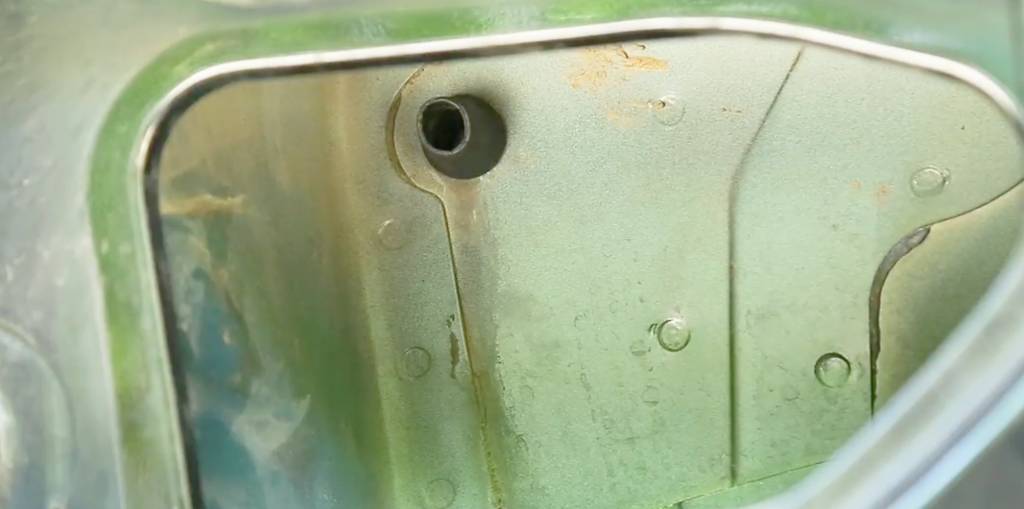
To fix this, you either try to somehow fish out this hose thru the hole inside of the side vent, or: you remove the interior A pillar cover → then you pull out the old hose → cut some part from of it → somehow attach a new hose to the old one → put it back down and pull it out/fish it out thru the exterior side vent hole.
You can buy a new genuine drain hose with the rubber ending, but if you want to save some money then just use some generic hose which is approx. the same size as the old one.
(By the way, if you decided to buy a complete new genuine drain hose then you can remove the drain hose completely from the sunroof and replace it as a whole – but in this case you have to remove the front part of the headliner if you want to replace the hose completely)
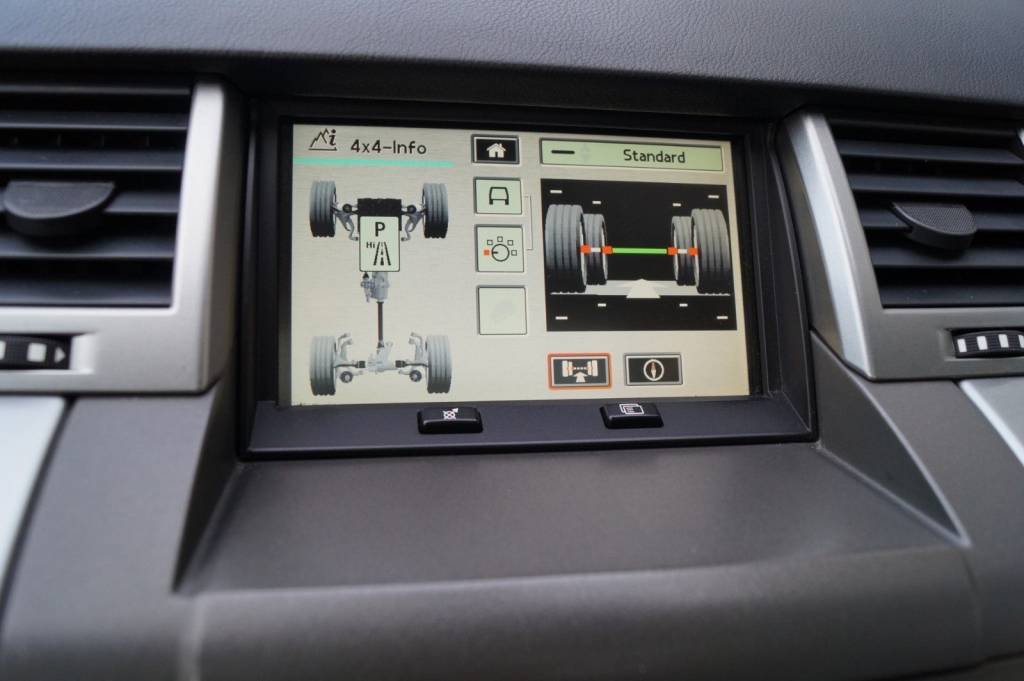
Suspension
Lets move onto the suspension. As usual pay attention to all those clunking, rattling or knocking noises on bad quality roads. If you hear a knocking sound when applying the brakes sharply from low speeds – then most probably the front lower control arm bushings are gone, and they can be worn out sometimes even after 60 000 mi. The anti-roll bar bushings can be more worn as well, and be prepared that the wheel bearings can fail before 100 000 mi.
Then there is the air suspension which can suffer from 3 main failures basically:
–The air compressor can often fail: In this case if you can’t raise the car and if you can’t hear the compressor working, then it’s most probably time to buy a new compressor. (But it’s good to first check the compressor fuse)
-The next are the air struts which can leak as they are getting older. So if one of the side of the car is lower than the other after sitting overnight, then you most probably have a leak in that particular air strut on that lower side.
-The last issue is related to the height sensors. If one of the them is faulty then you either get a suspension fault message or a warning light on the instrument cluster, or one of the side of the car will be noticeably higher or lower. You can even check the 4×4 info on the on-board monitor and look at the wheel animation. If the car is standing on a level ground, then all the wheels on this screen have to be in level and none of the wheels should be moving or should be higher or lower than the others. If one of the wheels is moving up and down, or if it’s higher or lower than the others, then there is most probably an issue with the height sensor on that exact wheel.
“The car itself has to stay perfectly in level on a even ground.
And it’s of course good to test the air suspension by raising and lowering the car at least a couple of times.”

Definitely check for all those whining, growling and humming noises from the front / or rear of the car which can indicate problems with the differentials. The car has to drive without these strange noises. “grinding noise when reversing can indicate issues with the rear differential lock + check the front and rear differentials and the transfer case for leaks”
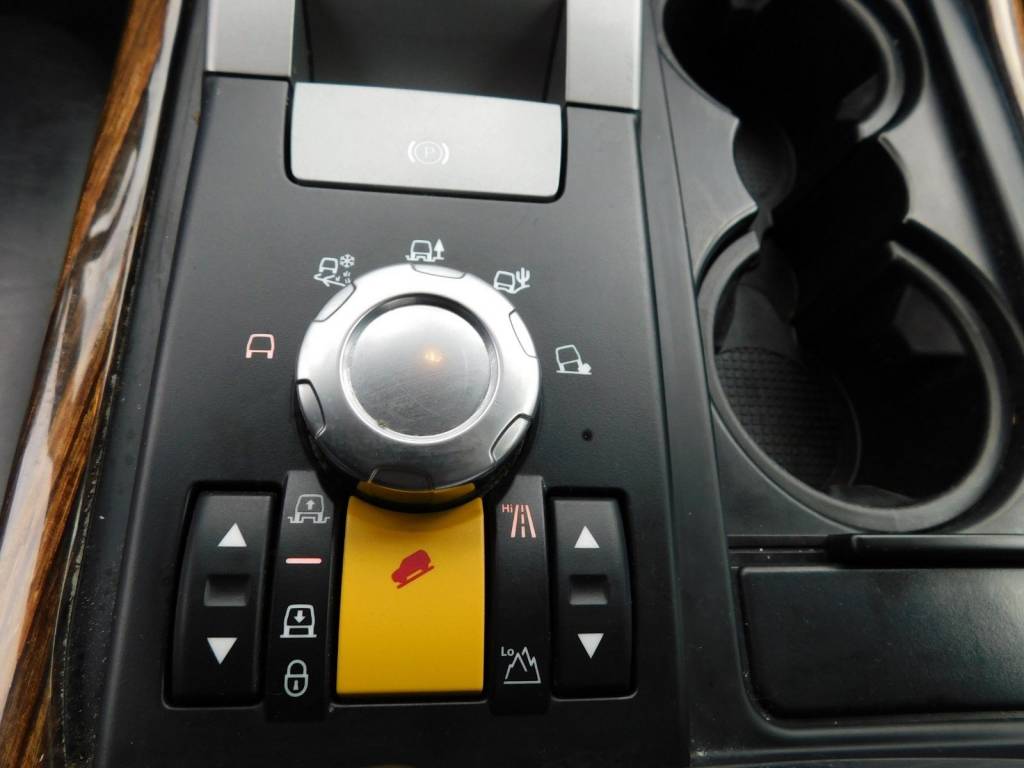
Check the transfer box as well, put the gearbox into neutral and push the LO button to engage the low range mode. It has to engage smoothly and whitout clunks or strange sounds. It can make a quiet noise from the outside as the system changes over but obviously nothing loud.
Dynamic Response package = Money Burning package
If you think that’s all for the suspension then you are wrong, because some of these cars are equipped with the Dynamic Response package, which means that the car has active hydraulic anti-roll bars. This is a great feature which helps reducing body roll in corners, and this very same system was available in the BMW 5 series E60 as well as in some other BMW models of course. If your Range Rover Sport is equipped with this feature then there is an additional hydraulic fluid reservoir in the engine compartment + there are additional pipelines underneath the car which connects these anti roll bars with the valve block and pump. But long story short, the hydraulic units on these sway bars can start to leak and the hydraulic pipes can rust out and leak as well, awesome. But the price for fixing this is even more awesome since a new active anti roll bar costs around 1 600 € / $1 760, and replacing the pipes costs from 2 000 € / $2 200 up to around 5 000 € / $5 500 (to replace the pipes you have to separate the frame from the body)
Since this Range Rover is a very heavy car then be prepared to change the brakes and tyres more often. Check the tyres for uneven wear and all of the tires should be the same size and preferably the same brand-becuase keep in mind that cheap tyres can indicate cheap maintenance.
Petrol engines
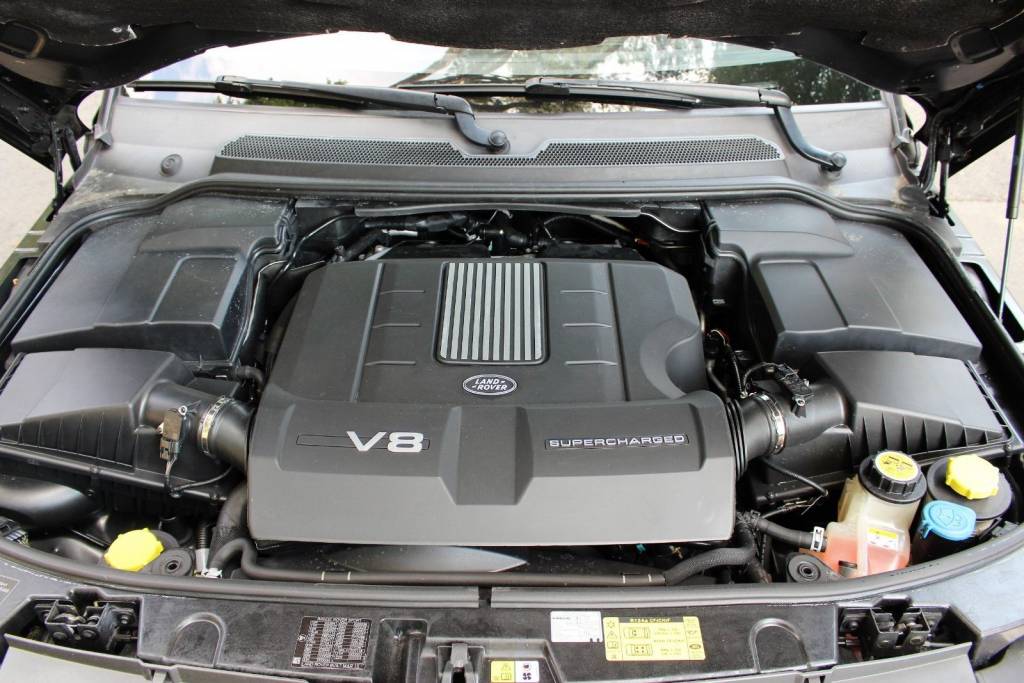
There are not many issues with the petrol engines, but in terms of reliability the older engines without the direct injection are the better choice. Of course they can have those usual petrol engine issues + there are cases of failed PCV valve which is not expensive to fix, but other than this there are no bigger problems.
The newer 5.0 l engines are equipped with direct injection so issues with the injectors can occur, although not that often. However there is a possible problem with the timing chain mechanism. Basically, the timing chain guides can fail to be exact – sometimes even after 50 000 mi and mostly on the supercharged 5.0 l engine. The timing chain tensioner will make a hole into the weak timing chain guide which will cause that the chain is going to have reduced tension. In this case there can be a rattle or a clicking sound on cold start, and sometimes even at idle from the front of the engine. The engine can also throw some fault codes or it will go into limp mode and run like garbage + in the worst case the chain can skip a tooth and cause more or less serious engine damage. At least they redesigned the tensioners and the guides, so the new guide does have a metallic pin on the spot where the tensioner is pushing against the guide thus eliminating the guide wear.
5.0 V8 rattling/clicking sound at idle indicating worn guides VIDEO
5.0 V8 proper idle sound VIDEO without any bad noises
If you want to preventively replace the guides with the tensioners, then you need to disassemble the front of the car and engine. In this case it’s good to change the chain as well even if it’s not stretched.
Issues with leaking water pump can occur too, but mostly on the newer 5.0l engines, so if you want a peace of mind then it’s good to change it after buying as a preventive maintenance.
Diesel engines

I would not recommend choosing the 2.7 l V6 diesel engine for various reasons mainly in cars which are close to 300 000 km. First of all it’s not very powerful, and then there are cases of worn crankshaft bearings and even broken crankshafts on these engines. A suddenly seized crankshaft or in some cases a hole in the cylinder block is definitely not very positive. Some say that the crankshaft itself is the problem, some say that the crankshaft bearings are causing this, and some say that the low oil pressure or the long oil change intervals are part of this issue. But long story short-this will destroy your engine basically. The good thing is, that this is not like very common so it usually happens only after 300 000 km. But there are of course rare cases when it happened before 200 000 km too.
“A noticeable louder-deep knocking from the engine is the early symptom of this issue.”
Now, the bad thing is that surprisingly this issue already occurred in the newer 3.0 l TDV6 engines as well – sometimes before 100 000 km and sometimes at around 200 000 km. So you can find newer facelifted models with replaced 3.0 l engines-mostly under warranty. But if you already have one of these engines then don’t panic, change the oil after maximum 10 000 km and don’t abuse it. This way you most probably won’t have these issues. But if you have more than 300 000 km on the car then you should be prepared for everything.
The turbochargers can fail usually only on the abused diesel engines, but more often on the weakest 2.7 l units. However in a lot of cases only the turbocharger actuator arm will seize up which is not expensive to fix.
“signs of a failed turbocharger: blue smoke at start up or acceleration, or excessive whining sounds from the engine”
But interestingly the crankshaft failure is not the only thing which can kill the 2.7 l V6 engines. In cars made from 2007 to 2008 which are equipped with this engine, the oil pump casing is not strong enough which means that the timing belt tensioner which is bolted onto the casing can simply break off with the part of the casing, causing the belt to jump off and destroying the engine basically. But there is no need to worry since Land Rover made a couple of revisions of this casing, so if you are replacing the timing belt then it’s good to replace the oil pump housing with the newest revision as well. Here you can buy the latest revision of the casing. – And no, nobody is paying me for this link, I don’t have enough traffic on this site anyway, LOL.
“Keep in mind that the diesel engines should not use any oil at all. If they have even the slightest oil consumption then most probably the turbochargers will have something to do with this. So you should definitely check the oil level regularly mainly on cars which have more than 120 000 km. And if you have oil consumption then don’t just top up the oil and act like nothing happened. Ignoring this is not the best idea.”
Lastly the EGR valve can fail, again mostly on the older 2.7l V6 engines + both of the diesel engines can have cracked intercooler hoses, so it’s good to occasionaly check or preventively replace them.
“Of course I have to also mention that you should use these diesel engine cars mainly for longer journeys, use high quality fuel/eventually some good quality additives to at least minimize the various issues with injectors, clogged DPF or clogged EGR.

Most of the engines are equipped with timing chain which can be worn usually just in high mileage cars, except the timing chain guides in the 5.0 l V8 engines.
The 2.7 l TDV6 engine has a timing belt and it’s good to replace it with the water pump and pulleys a little earlier than the original interval.
This Range Rover can be equipped with the 6 speed or the 8 speed automatic gearbox. The 8 speed is the more reliable from them, since the older 6 speed version can have more often issues with the worn torque converter. As usual-check the transmission for excessive slipping, hesitation or fluctuating revs: these are usually the symptoms of a bad torque converter + of course the gearbox has to change gears completely smoothly whitout any kind of shuddering.
To summarize things up: it’s better to avoid the V6 diesel engines, buy only a car with a proper maintenance history, find a good independent specialist, change all the fluids in time and keep at least 6 000 € for the possible repairs, and if you want to do the maintenance at the dealer then you should keep even more money. As usual check the car properly before buying, and if you have personal experience with this car or more information about it, then you can write it into comments!




